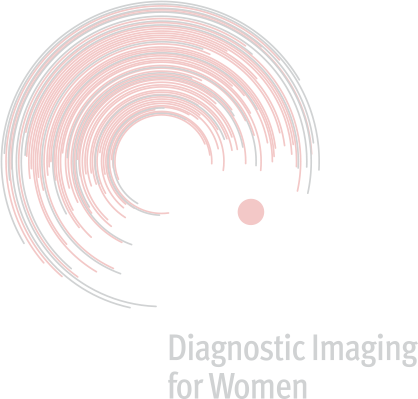Diagnostic Imaging for Women Supporting Vital Research into Breast Cancer this October
Breast Cancer is the most commonly diagnosed cancer for women in Australia, where an estimated 20,000 Australian women will be diagnosed this year and where 1 in 7 women will be diagnosed during their lifetime.
Diagnostic Imaging for Women is supporting World-Class Research projects to help further understand risk factors, develop new ways to treat and monitor breast cancer and improve the quality of life for breast cancer patients by improving treatment outcomes and, ultimately – saving more lives.
Diagnostic Imaging for Women (difw) is proud to donate $5 from every Mammogram performed with us during October 2023
with proceeds going directly to the National Breast Cancer Foundation & their vital research projects.
Since the National Breast Cancer Foundation started funding in 1994, the death rates from breast cancer in Australia have reduced by 43% thanks in large part to research in prevention, early detection and new and improved breast cancer treatments.
Screening For Breast Cancer
A woman's risk of developing breast cancer increases with age. One of the most effective ways to reduce the impact of cancer is to undergo screening regularly, and detect any changes in your body.
Early Detection Saves Lives
Do you know the difference between a screening and a diagnostic mammogram?
Screening mammograms are performed on women 40 years or over to detect possible signs of breast cancer by BreastScreen as part of a free service for women who are asymptomatic or not have any clinical symptoms such as a lump.
It is the best way to identify breast cancers at an early stage, for women who fall into the higher-risk age category.
Diagnostic mammograms are performed to more closely examine the breast tissue, typically following symptoms or after a screening mammogram shows suspicious results.
If you have clinical symptoms such as a lump, nipple discharge, changes in breast shape or discolouration, you should visit your GP, regardless of your age.
Radiology plays an important role in a breast cancer patient's health journey
The aim of diagnostic breast imaging is to optimise the early and accurate diagnosis of breast abnormalities. Mammography is the primary breast imaging technique for the investigation of symptomatic women 35 years and over and for the screening of asymptomatic women aged 50–69 years.
The diagnosis and management of breast cancer relies upon a number of specialist skills provided by a multidisciplinary team, including breast surgeons, pathologists, medical oncologists, radiation oncologists and radiologists.
Diagnostic Imaging for Women provides the full range of breast imaging and intervention, including 3D mammography, ultrasound, MRI, nuclear medicine and pre-op localisation procedures.
Diagnostic Imaging for Women has a dedicated team of breast imaging trained staff, including a fully qualified breast specialist Radiologist doctor, mammographers, nurses, and sonographers onsite to provide all breast-related medical imaging.
Educating yourself about breast cancer is important for finding and treating it early because it is a serious illness that affects many.
Why Early Detection Matters:
Finding breast cancer early can make a world of difference. Here's why:
Better Treatment Options:
Discovering breast cancer at an early stage often means gentler, more effective treatments.
More Choices:
Early-stage breast cancer provides a range of treatment options tailored to your unique needs.
Higher Survival Rates:
Catching it early significantly boosts the chances of successful treatment.
Less Invasive Interventions:
Early detection can lead to less aggressive surgeries and better preservation of natural breast tissue.
Key Steps for Early Detection:
Breast Self-Exams:
Regular self-exams play a vital role in identifying changes in your breast tissue. By familiarising yourself with the texture, shape, and size of your breasts, you can quickly spot any unusual developments.
Clinical Breast Exams:
Schedule regular clinical breast exams with a healthcare professional. These exams aim to identify any abnormalities that self-exams alone might not notice.
Mammograms:
Mammograms are X-ray images of the breast that can detect even the tiniest changes in breast tissue. Women over 40 should get regular mammograms. If a family has a history of breast cancer, they may need earlier screening.
Ultrasound:
Ultrasound allows for “real time” imaging and helps diagnose symptoms and doctors often perform it alongside a mammogram to gather more information. For example, it can help in the diagnosis of cysts. It is also useful as a means of performing a biopsy.
Magnet Resonance Imaging (MRI):
MRI uses a magnetic field to create images of the breast tissue. It does not use radiation or x-rays like a mammogram does.
MRI has been shown to be a very sensitive tool for screening for breast cancer, particularly for women at high risk, for example, those with a very strong family history of breast cancer, or at risk because of a genetic predisposition.
Recognising Possible Warning Signs:
Knowing what to look for matters. Be aware of:
Lumps or Masses:
A new lump or mass in your breast can be felt during self-exams.
Shape Changes:
Watch for swelling, dimpling, or changes in breast shape.
Skin Changes:
Redness, scaliness, or unusual skin changes on the breast or nipple.
Nipple Changes:
Any shifts in nipple position, inversion, or discharge.
Pain:
Even though most breast cancers do not cause pain, you should get checked if you experience unexplained breast or nipple pain.
